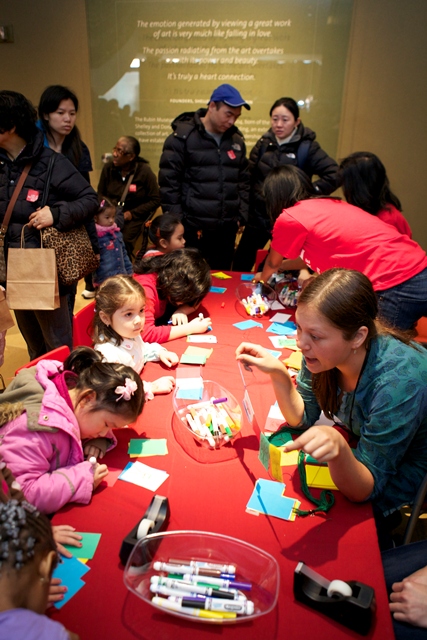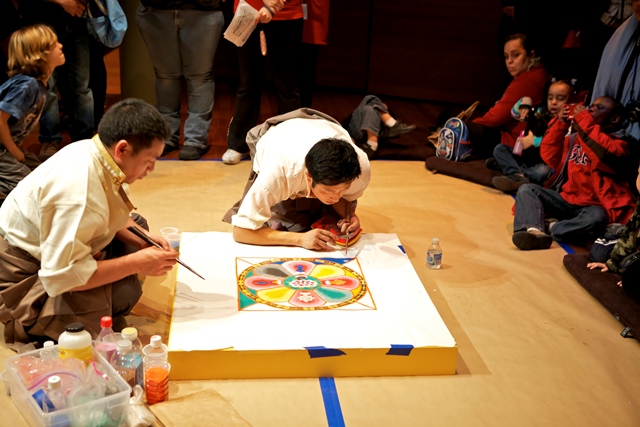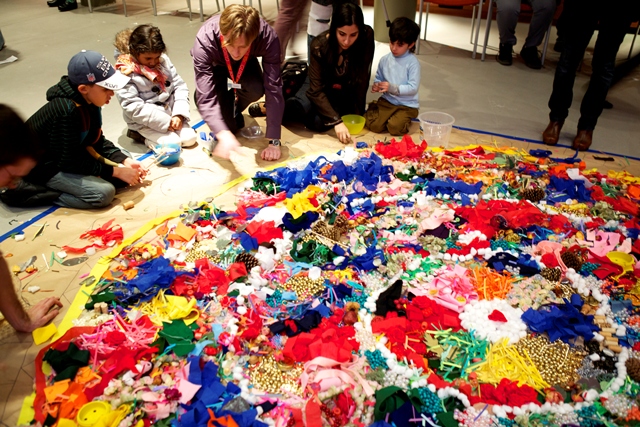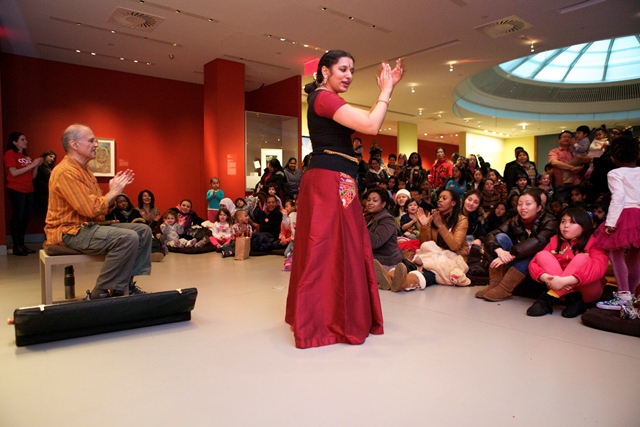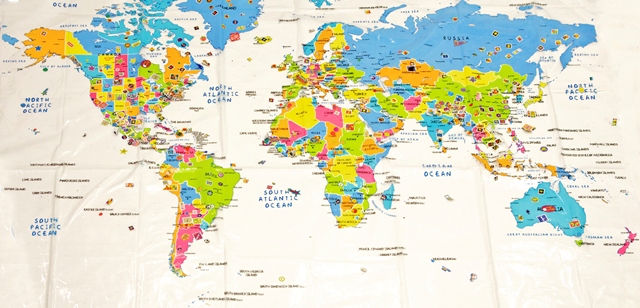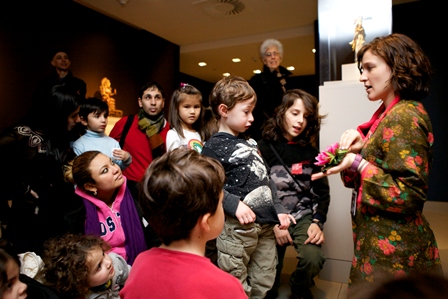The Rubin Museum of Art celebrated the Himalayan New Year (Losar) on February 25, 2012 with a day of art-making, music and more. Close to 3000 visitors walked through our doors and in addition to exploring our galleries, they participated in various activities throughout the day, such as: map making, creating torma sculptures, and making a giant collaborate mandala.
Visitors participated in various art-making activities, including button making, creating mini prayer flags, and woodblock rubbings. Prayer flags are used to promote peace, compassion, strength, and wisdom. In the Himalayas it is believed that the prayers and mantras written on the flags will be blown by the wind to spread goodwill and compassion throughout the world.
Butter Sculptures (Torma)
Torma are traditional Tibetan butter sculptures used as offerings in shrines during
special ceremonies. Master sculptor, Dorgee Gombu demonstrated unique butter sculpting techniques whiles visitors created clay sculptures of their own.
Mandala Creation
Visitors were invited to watch the creation of a sand mandala. Mandala is a Sanskrit word that means “center and circumference.” These concentric diagrams have spiritual and ritual significance in both Buddhism and Hinduism. A sand mandala is ritualistically created and destroyed once its accompanying ceremonies and viewing are completed to symbolize the Buddhist doctrinal belief in the transitory nature of material life.
Afterwards visitors participated in a giant collaborative work of art, creating a mandala together out of recycled materials which was later dismantled in a collaborative “mandala destruction ceremony.”
Music and Dance Performance
Musician Sunder Das created soft melodies with his bamboo flute, the bansuri, accompanied by dancer Prachi Dalal. This is a type of flute originating from Bangladesh, India, and Nepal made from a single hollow shaft of bamboo with six or seven finger holes. An ancient musical instrument, it is revered as Krishna’s divine instrument.
Collaborative Map Making
Visitors traced their journey to the Rubin Museum of Art and their family roots by adding sticker to a collaborative map of New York City and the world.
Gallery Activities
In addition to the various art-making activities, visitors participated in gallery activities through Story Tours led by museum guides to experience color and shapes throughout several museum exhibitions. Visitors were also encouraged to participate in a museum-wide Scavenger Hunt, searching for various clues throughout the galleries.
Family Day: Himalayan New Year was a part of a collaboration with Cool Culture. The Rubin Museum is a partner of Cool Culture, a not-for-profit organization that provides access, information, and support to underserved families so that they can visit New York City’s outstanding museums and other cultural institutions with their children. With a Cool Culture Family Pass, families receive free entry at any time to ninety museums, botanical gardens, and zoos.



